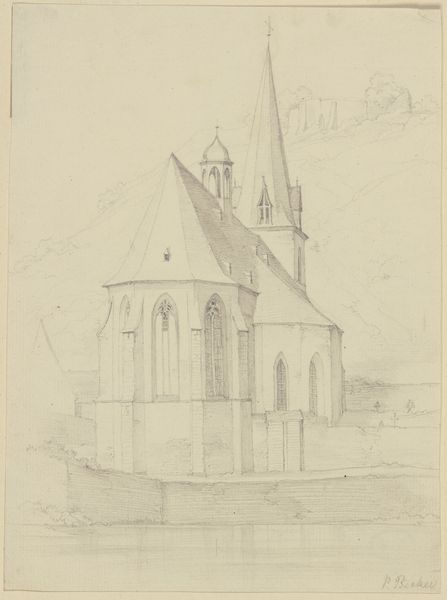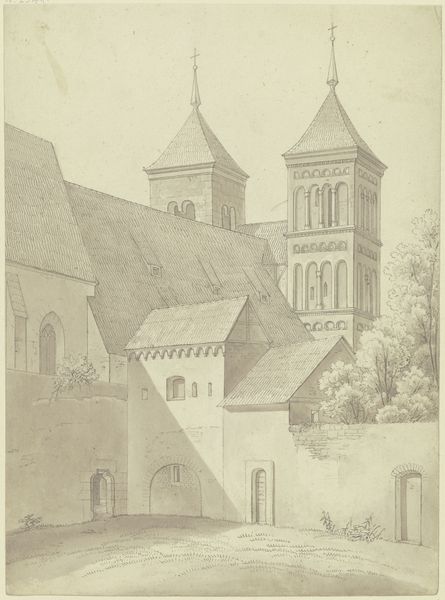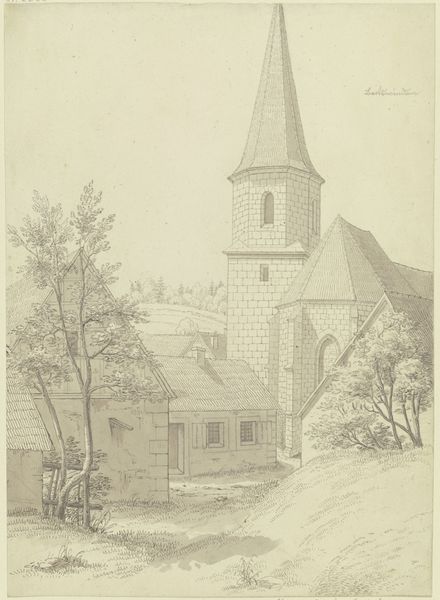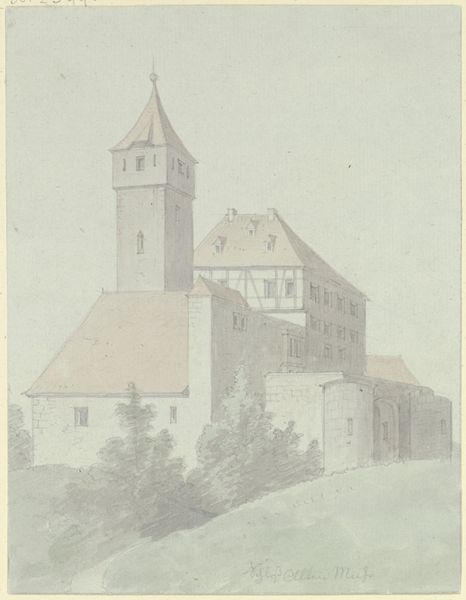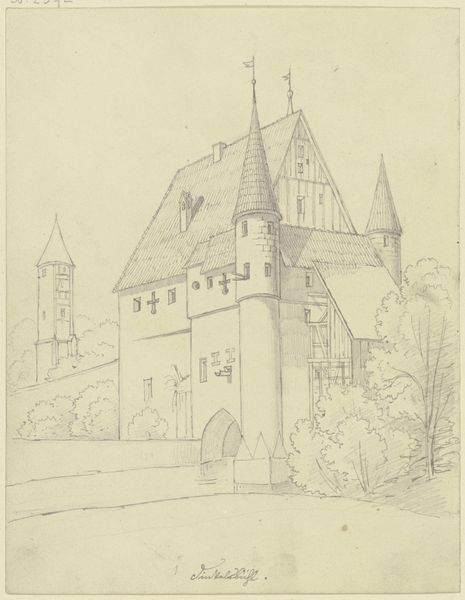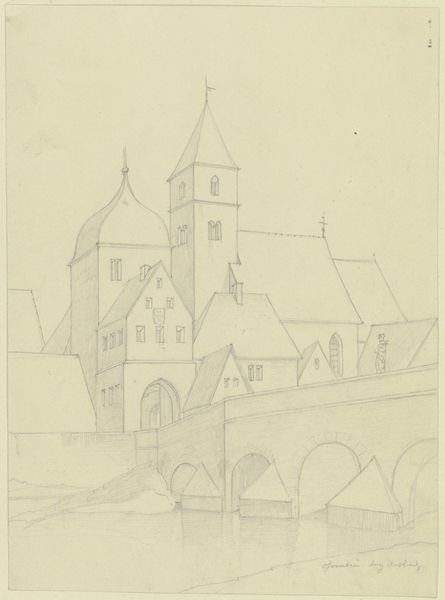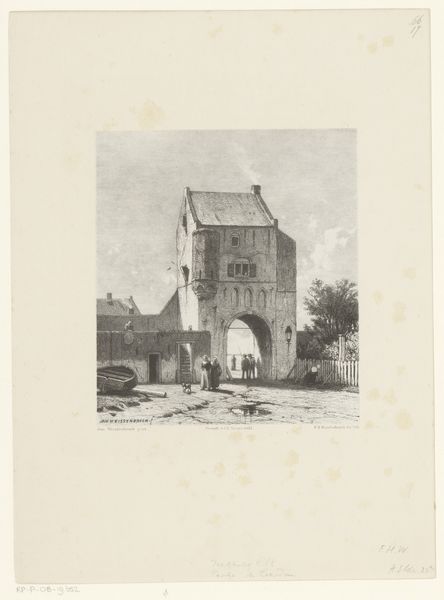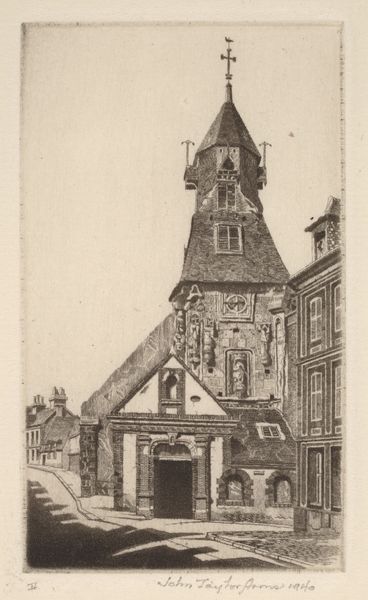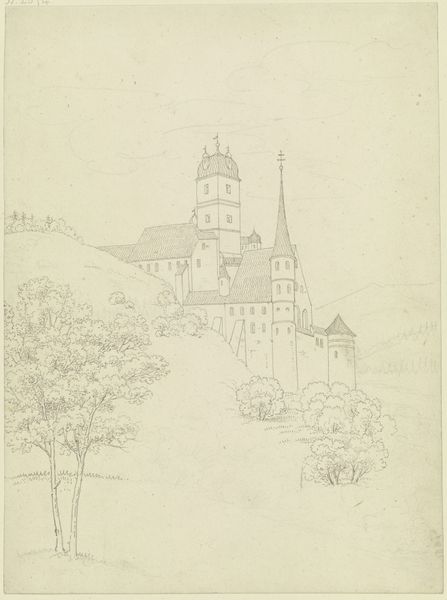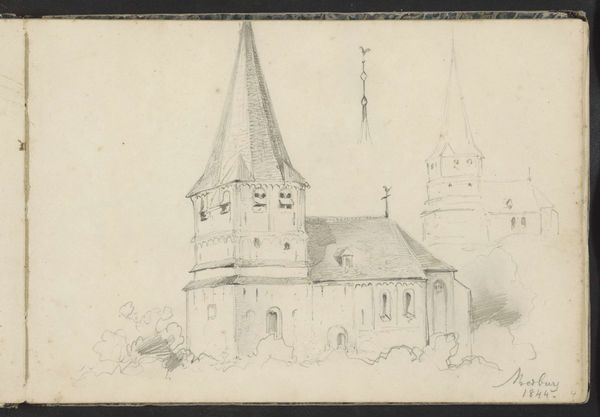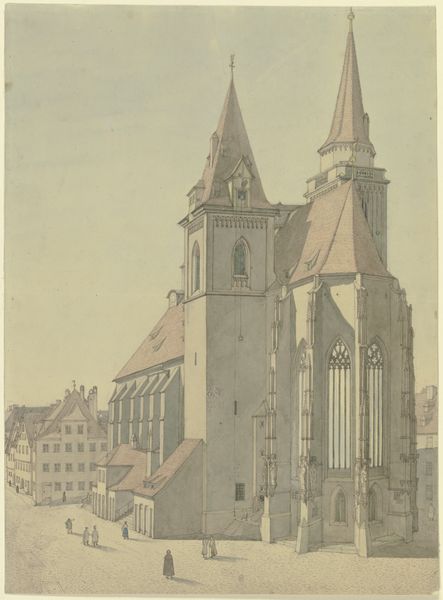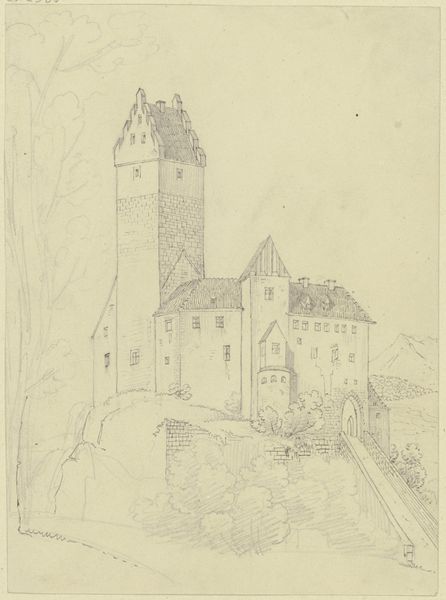
drawing, paper, ink, architecture
#
drawing
#
landscape
#
etching
#
paper
#
ink
#
romanticism
#
architecture
Copyright: Public Domain
Curator: Here we have Karl Ballenberger’s rendering of “Heiligenblut near Landshut.” Crafted in ink on paper, this work showcases the artist's keen eye for architectural detail. Editor: My initial impression is one of faded grandeur. The subdued tones evoke a sense of history, perhaps tinged with melancholy. Curator: Indeed. Notice how Ballenberger employs delicate hatching and cross-hatching to define the volumes of the church and its towering spires. The composition leads the eye upward, emphasizing the building's verticality and its relationship to the sky. Editor: And consider the social context of these kinds of architectural renderings. They romanticize a past, particularly medieval structures that often symbolize spiritual and temporal authority, in the rise of secular states. Is there perhaps a quiet longing for a bygone era embedded here? Curator: One could argue that the clean, precise lines prioritize a formal elegance above all. There’s an attempt to present architecture as an ideal form, devoid of human messiness, if you will. Observe how the surrounding buildings are subordinate to the church in size and detail. Editor: But that suppression of other visual narratives is revealing in itself. Note how this architectural hierarchy may implicitly reinforce societal hierarchies where religious institutions exerted immense power. Even the presence of the horse pulling a small cart evokes class and labor. Curator: True, and the restrained color palette of sepia inks gives this work a feeling of remove. One might suggest it serves as a filter, through which we see this scene. The artist’s marks shape our perception. Editor: Absolutely. And that perceived aesthetic purity of the sepia wash almost sanitizes the context. Who and what is deemed worthy of artistic rendering, or not? This speaks volumes about art and its ability to support, or undermine, a power structure. Curator: Precisely, the choice of stylistic expression reflects an era, inviting us to think on the layers of design choices. Editor: Every stroke then carries cultural significance and, once unlocked, expands how we think about visual conventions. Curator: By slowing down our experience, hopefully we can uncover an artwork’s layered meanings. Editor: An exercise to sharpen one’s vision of power.
Comments
No comments
Be the first to comment and join the conversation on the ultimate creative platform.
